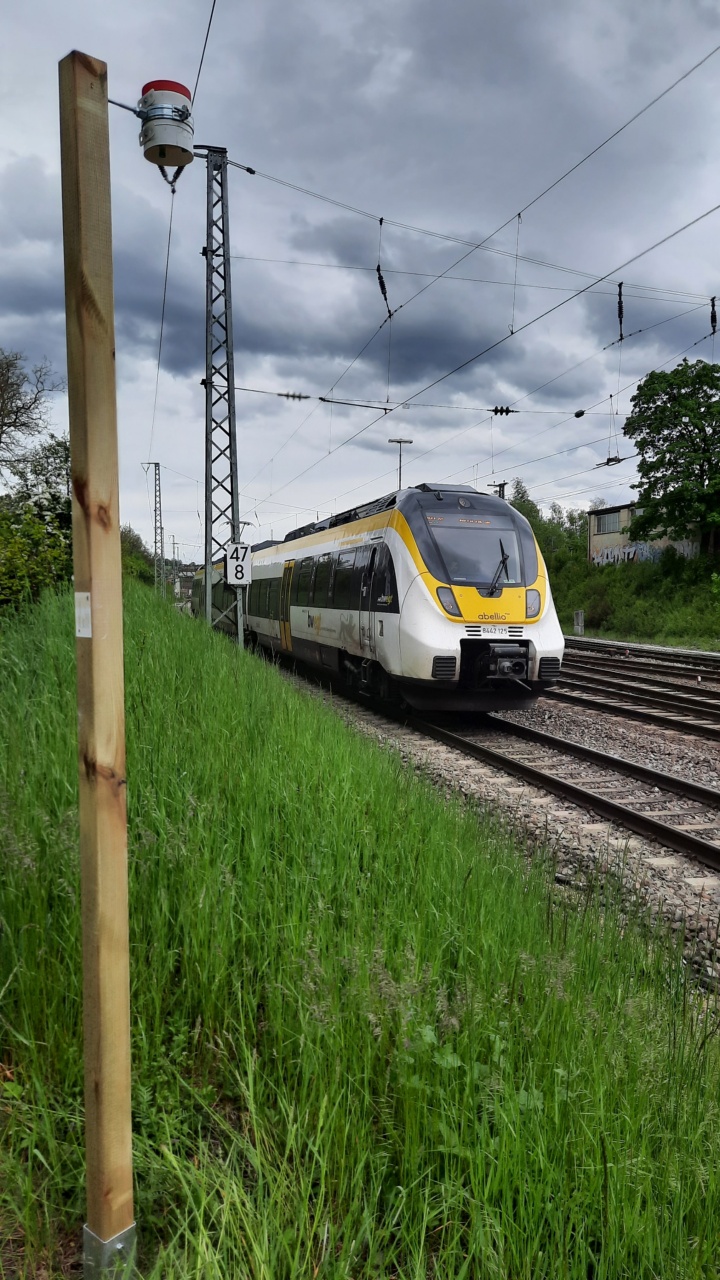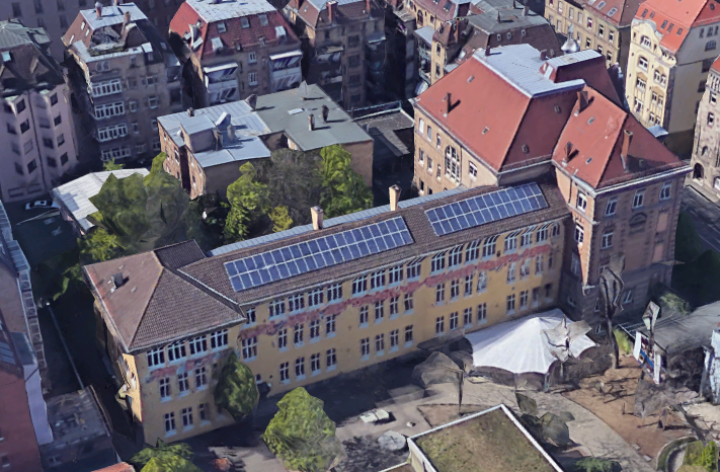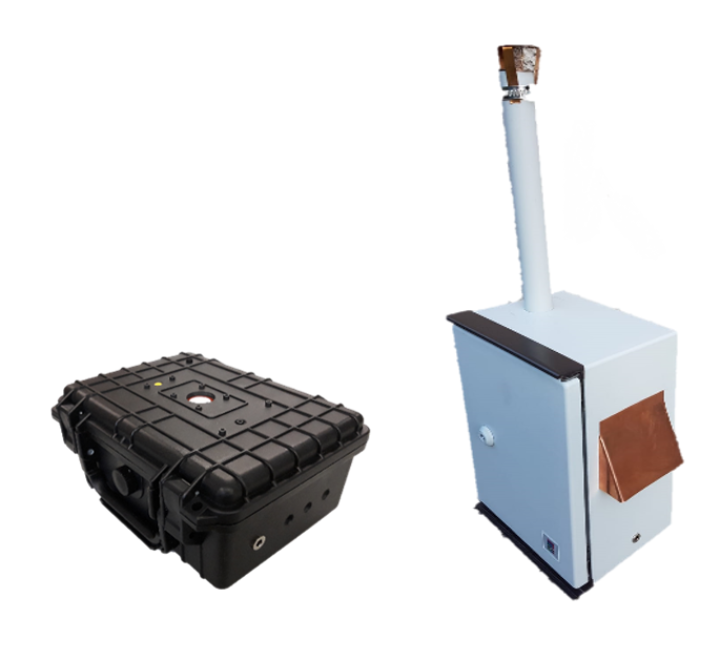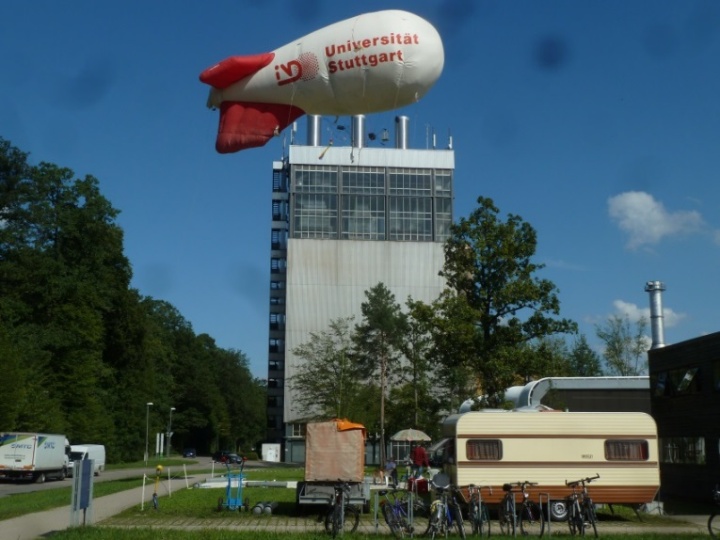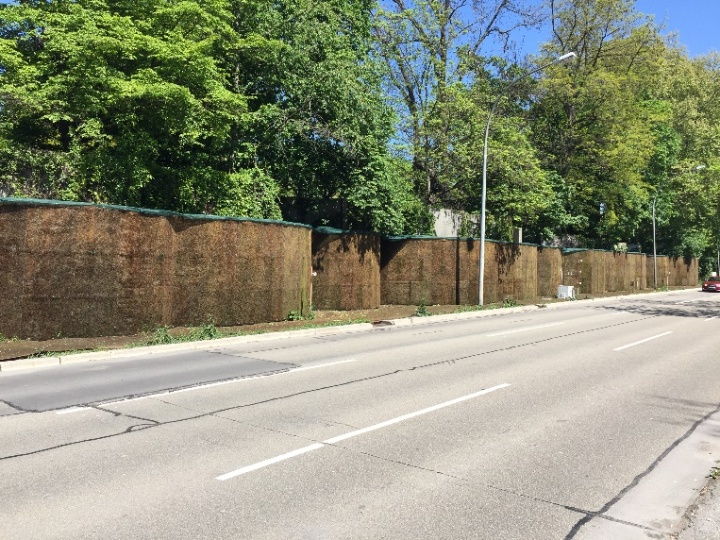Activities
Flue gas cleaning
- Optimization and development of flue gas treatment devices for the reduction of emissions of NOX, dust, SO2, and heavy metals (in particular mercury) from combustion processes
- Investigations on DeNOX catalysts used in the SCR process; i.e. deactivation problems associated with the use of secondary fuels, behavior of mercury, conversion of NH3, and their interdependencies
- Investigations on flue gas desulphurization plants; i.e. chemical processes in the scrubber focusing on the behavior of mercury, in order to obtain effective and reliable retention of mercury
- Development of advanced CO2 capture technologies using amine based scrubbing processes (post-combustion capture) in laboratory and technical scale: Experimental investigations on chemical scrubbing by the use of amines or amino acid salt solutions, improvement of existing scrubbing processes, and studying a novel technology for CO2 removal from gases by adsorption on solid sorbents
- Investigations on the separation of CO2 from biogas aiming at the subsequent admixture of the treated gas into the natural gas grid
Air quality control
- Wood burning, air pollutants and operating behavior of stoves and small firing systems
- Calculation of the emissions of small and medium scale biomass combustion systems
- Developments and use of measuring techniques for emissions of flames, furnaces, combustion systems as well as for ambient air pollutants
- Mathematical modelling of small firing systems for the improvement of the combustion behavior
- Investigations of indoor air pollution
- Outdoor air quality research in highly polluted urban areas
- Calculation of the emissions of different sources (traffic, domestic heating etc.) in combination with dispersion modelling (among others: HBEFA, AUSTAL, MISKAM)
- Tethersonde measurements of air pollutants and meteorological parameters to determine the vertical distribution of the measured parameters within a limited time period
- Mobile measurements in densley populated cities with bicycles, equipped with measurement instruments
- Investigation of low-cost sensors for air quality measurements
Ongoing Projects – Flue gas cleaning
The following introduces our on-going and recent research projects. Most of them are carried out in cooperation with various partners, thus only the tasks of the IFK is described. Please feel free to contact the corresponding contact person or Mr Marc Oliver Schmid for additional information.
Im Fokus steht die Erprobung und Bewertung eines optimalen Anlagenkonzeptes zur chemischen CO2-Abtrennung aus Rauchgasen mittels Aminwäsche (post combustion capture). Die Absorption über Packungskolonnen ist dabei in der chemischen Industrie seit vielen Jahren Stand der Technik. Dies bietet einen optimalen Ausgangspunkt für die Weiterentwicklung des Verfahrens, um den spezifischen Anforderungen fossiler CO2-freier Kraftwerke der Zukunft gerecht zu werden. Der Einsatz eines Sprühwäschers bietet hierbei besondere Vorteile. Durch das Entfallen der Packung können sowohl die Investitionskosten als auch der Energiebedarf für den Gesamtprozess gesenkt und der mögliche Betriebsbereich erheblich vergrößert werden. Ein Sprühabsorptionsprozess wurde hierfür nach Versuchen im Labormaßstab im Technikumsmaßstab umgesetzt und ein Sprühwäscher mit einem Rauchgasvolumenstrom von 120 m3/h erprobt. Neben Monoethanolamin (MEA) können auch alternative aminbasierte Absorptionsmittel (z.B. Aminosäuresalze) getestet werden. Der Prozess soll optimiert und ein effizientes und wirtschaftliches Sprühabsorptionsverfahren unter größtmöglicher Lastflexibilität entwickelt werden. Eine abschließende energetische und wirtschaftliche Bewertung des Prozesses ermöglicht die Abschätzung des Energiebedarfs und der CO2-Vermeidungskosten.
Bearbeiter: Marc Oliver Schmid
An optimal plant concept is tested and evaluated to remove carbon dioxide from flue gas using aqueous amine solutions (post combustion capture). The absorption of carbon dioxide using packed columns is thereby state of the art in the chemical industry since many years. This offers an optimal starting point for further process development to meet the specific requirements of future fossil CO2-free power plants. The application of a spray absorber provides eminent advantages. By developing a downstream spray scrubbing process, which is a particular cost-effective technique, existing power plants can be retrofitted. The process is also characterized by a high level of flexibility by frequent load changes of power plants. Following laboratory tests, the spray absorption will be implemented to pilot plant scale. A spray scrubber with 100 m3/h flue gas will be tested. Also various amine-based scrubbing solutions (amine solutions, amino acid salts) that can be used as alternative to monoethanolamine (MEA) are investigated. They will be evaluated regarding to their energy demand for regeneration. Furthermore, process optimization is aiming to save regeneration energy. An additional scope of the project is the determination of suitable materials for an optimal plant design.
Contact person: Oliver Seyboth, Simone Zimmermann
Funded by the Federal Ministry of Education and Research, a novel process for the upgrade of biogas is developed by the IFK. The process utilizes specific resins, which are able to remove CO2 from raw biogas in a dry adsorption process. By stripping the loaded resins with air, regeneration takes place. Within the project, resins are provided and further developed by the project partner Purolite®. For that purpose, the adsorption and desorption mechanisms are investigated by the IFK, in order to further optimize material properties and durability. Furthermore, the energy demand of the process will be optimized by the integration of phase-change materials (PCM) for efficient use and integration of the waste heat. Within the framework of the project, PCM materials are developed and provided by the project member RUBITHERM®. The overall aim of the project is to develop a process, characterized by user-friendly operation at atmospheric pressure, constant low temperature and without the consumption of any chemicals. Thus, it will enable the additional option of biogas upgrading and injection into the natural gas grid for smaller biogas plants.
Contact person: Daniel Safai
Within the framework of a research project founded by several partners from industry, the possibilities for optimizing the common flue gas cleaning systems of coal-fired power plants regarding to the co-removal of mercury is investigated. The aim is to keep the mercury emissions by appropriate combinations of procedures and operations at a selected German power plant unit in the range of 1-2 µg/m³ STD tr. Thus, the stricter limit values for mercury emissions from coal-fired power plants, which have been decided from the EU and will apply in 2021, schuld be able to be complied with. Simultaneously, the quality of the by-products should correspond to the criteria agreed with the customers.
For this purpose, different large-scale experiments on a coal-fired power plant unit are carried out and evaluated with accompanying measurements with regarding to the mercury reduction. For more detailed understanding of mercury removal, especially for the co-removal in the wet flue-gas desulphurization (FDG) and possible re-emissions, accompanying lab-scale experiments will be carry out.
Contact person: Weronika Kogel
Recently completed projects – Flue gas cleaning
Currently, biogas is preferentially utilized for the production of base load electricity in combined heat and power plants (CHPs). By this, there is often an insufficient utilization of heat. Within the framework of the project, additional sustainable and flexible value-added chains for biogas in Baden-Württemberg are researched. Technical concepts for flexible, demand- and site-oriented biogas storage and utilization are compared and evaluated related to their application in Baden-Württemberg. The considered utilization concepts include: the upgrading of biogas including the feed-in into the natural gas grid by different upgrading technologies, the upgrading and utilization in an on-site filling station, the buffer-storage and demand oriented electricity production in a CHP as well as further combined flexible utilization concepts. The potential of the particular utilization concept is determined by a model-based study. This consideration includes a geographical model of the situation in Baden-Württemberg as well as process engineered models of the biogas utilization concepts, which are implemented and compared in process simulation software. The definition of the scenarios and assessment criteria are developed in comparison with experts and the public.
Contact person: Tobias Schwämmle
Aim of the project is the scientific investigation of an innovative biogas upgrading process. The process enables the chemical absorption of carbon dioxide into amino acid salt solutions. The regeneration of the scrubber solution is carried out through a combination of increasing the temperature and flushing the loaded scrubber solution with air. Due to air stripping, the CO2 partial pressure in the gas phase decreases, thus leading to desorption of CO2 at moderate temperatures. Compared to the conventional amine scrubbing, the process temperature is low, which enables heat integration and results in an efficient biogas upgrading process, which might be economically feasible even for small biogas plants. Another advantage of the low heat level and the applied scrubber solution is its stability against degradation under the prevailing process conditions. Within the project, a flexible extended laboratory scale plant will be constructed and operated. Furthermore, relevant properties of the amino acid salt solutions, which are important for upscale and computerized process simulations, will be determined. With the generated data a process simulation will be carried out in order to directly compare the process principle with state of the art biogas upgrading processes.
Contact person: Barbara Klein
Experimental investigations are conducted on continuously operated laboratory-, pilot- and full scale flue gas desulfurization units (FGD). Long-term studies of FGD reactions are performed. The experiments with focus on the chemistry of the FGD process lead to a better understanding of the processes which are involved in the removal of SO2 and the reactions of absorbed mercury compounds. Dynamic effects are studied due to their importance regarding to the increasing load flexibility of thermal power plants. Phenomena such as long-term course of pH value and oxidation reduction potential (ORP) as well as limestone-blinding and mercury partitioning are studied in detail.
Contact person: Silvio Farr, Barna Heidel
Reduction of nitrogen oxides by application of SCR-DeNOx-catalysts is state of the art. However, biomass combustion, co-combustion of refuse derived fuels or increasing the catalysts lifetime lead to high demand on applied catalysts. Within the framework of the project, IFK is performing research on newly developed catalysts in micro reactors and technical scale test rigs. These catalysts have been modified in their chemical composition, their geometry and by means of nano-material introduction into catalysts material. During the experiments, focus is put in particular on the influence of the parallel reactions of nitrogen oxides removal, mercury oxidation and SO2/SO3-conversion at the catalyst in different flue gas atmospheres and their effect on downstream air pollution control devices is studied.
Contact person: Tobias Schwämmle
Link: http://devcat.eu-projects.de
Completed projects – Flue gas cleaning
Within this project, the application of amino acid based scrubber solutions for the absorption of carbon dioxide in biogas is investigated. Moreover an innovative process for the regeneration of the washing solution including air stripping will be applied. The aim is to upgrade biogas without major methane losses and to feed it into the natural gas grid. Special emphasis is put on the energy demand of the process as well as the capital costs, leading to an advanced technique for biogas upgrading. The aim is to reduce the costs for the process in order to enable its application in small-size biogas plants.
Contact person: Barbara Klein
Investigation of process parameters for the regeneration of amine based solvents in the post combustion capture of CO2.
Contact person: Oliver Seyboth
Regenerative energy sources play an important role for reducing the CO2 emissions. One possibility is the fermentative production and the upgrading of biogas. Within this project, hydrogen and biogas are produced from biomass in a novel 2-step process. Applying an innovative technique, these gases are upgraded to pure hydrogen and pure methane. The upgrading process uses adsorption of CO2 on functionalized polymer resins. Therefore laboratory examinations with both product gases are carried out at IFK. With a model plant, the upgrading of real biogas is tested. In addition the fermentation is connected with the gas upgrading and is operated for an extended period of time to demonstrate the feasibility.
Contact person: Katharina Raab
Oxidation of mercury at SCR-DeNOx-catalysts is an important step for the removal of mercury from flue gas. Research is carried out, characterizing SCR-catalyst with novel chemical compositions in laboratory- and technical scale test rigs. During the tests, in addition to DeNOx-activity, also mercury oxidation and SO2/SO3-conversion is determined. In the framework of full-scale power plant measurements at SCR-DeNOx-reactors, the influence of deactivation on NOx-removal, mercury oxidation and conversion of SO2 is determined and evaluated.
For specific conditions, mercury can be removed from flue gas by wet FGD. Due to a wide variety of influencing parameters, emphasis is put on fundamental reactions of mercury compounds in the process. Experimental investigations are combined with software based modelling in order to achieve an in-depth understanding of the key factors influencing the process. Research includes the detailed investigation of relevant parameters and long-term behaviour of laboratory-, technical- and full-scale wet FGDs. Focus is on reactions of sulphur and mercury compounds and the impact of pH-value, oxidizing-reducing potential and lime-stone blinding.
Emissions of mercury are of global concern. One option to reduce mercury emissions from coal fired power plants is to inject activated carbon particles into the flue gas path. Different sorbents, based on carbon but also on regenerative materials are benchmarked and their potential is analyzed. Also, the impact of SCR catalyst on the speciation of mercury is characterized.
Measurements in technical- and large-scale grate firing plants operated by the IFK allow the calibration and validation of the software modell. The aim is to be able to use the software for the optimization of existing facilities.
The removal of CO2 from flue gas by absorption in various amine based solvents was investigated. A new test-rig for the capture of 1 t/h CO2 was operated in Esbjerg (Denmark). In addition, a technical scale facility was designed (8 kg/h CO2) and different solvents were investigated.
Biogas, consisting mainly of CH4 and CO2, is converted to substitute natural gas and subsequently injected into the natural gas grid. Key parameter for biogas upgrading is the cost-efficiency of the process utilized. For this purpose, a novel technology for biogas upgrading is developed and investigated.
Projects - Emission Control
Employment of the numeric burn simulation for the optimization of the mixture conditions and complete combustion
(e.g. log wood boiler, chimney stoves) with very low emissions of products of incomplete combustion. Application of numerical combustion simulation for optimizing the mixing conditions and the complete burnout out of the fuel.
Final reports:
- Holzverbrennung 2015. Konzeption, Darstellung und Untersuchung eines extrem emissionsarmen Stückholz-Heizkessels
- Entwicklung von emissionsarmen häuslichen Feuerstätten für feste Brennstoffe
- Untersuchungen zur Feinstaubentstehung und CO-Bildung beim Verbrennungsprozess in chargenweise betriebenen Hausbrandfeuerstätten und Entwicklung emissions- und partikelarmer Feuerungsanlagen
Publication:
with an thermal output of < 1000 kW
Final reports:
- Entwicklung eines kompakten und kostengünstigen Gewebefilters für Biomassekessel
- Emissionsmessungen bei der Verbrennung von Heupellets in einem Heizkessel mittlerer Leistung mit Gewebefilter
- Entwicklung eines Elektroabscheiders für Biomasse-Kleinfeuerungsanlagen - 1. Phase
- Überprüfung der Wirksamkeit von Staubabscheidern für Feuerungsanlagen für feste Brennstoffe
(e.g. in the context of the monitoring measurements after 1. BImSchV)
Final reports:
- Durchführung von Feldmessungen an Biomassekesseln zur Bewertung der Grenzwertüberwachung nach 1. BImSchV
- Weiterentwicklung des Online-Staubmessgerätes SM 500 für Langzeitmessungen und zur Bestimmung der Partikelgrößenverteilung
- Entwicklung eines Feinstaubmessgerätes für Überwachungsmessungen an Feuerungsanlagen für feste Brennstoffe im Geltungsbereich der 1. BImSchV
- Durchführung einer modellhaften Eignungsprüfung eines Staubmessverfahrens für die Überwachung der neuen Staubgrenzwerte der 1. BImSchV für Kleinfeuerungsanlagen
- Untersuchungen bei besonderen Abgaszuständen zur Eignungsprüfung eines Staubmessverfahrens im Geltungsbereich der 1. BImSchV
- Untersuchung eines Kombisensors zur Messung von CO/HC und O2 sowie der Abgastemperatur
Test set-ups: various mechanically fed boilers in the capacity range 20 to 120 kW; commercial facilities (fuel: hay, straw, residues of crop) to improve the operational reliability and the complete burnout of the fuel with simultaneous NOx reduction in the range of < 1.000 kW thermal output.
Final report:
if necessary in combination with emission control systems for solid fuels.
Experimental Facility: Small Scale Firings
Thesis:
Regelung von Biomassefeuerungen durch Messung von Luftzahl und Kohlenmonoxidkonzentration
Final reports:
- Methodische Bewertung von Sekundärmaßnahmen für kleine Biomassefeuerungen
- Geruchsbelästigungen durch Holzfeuerungen
Preliminary study:
(e.g. with hourly dissolution with consideration of the weather-dependent energy consumption of the firings)
Final report:
Projects - Immission Control
ICARUS was a European research and innovation project active from May 2016 to October 2020. The project applied integrated tools and strategies for urban impact assessment in support of air quality and climate change governance in EU Member States leading to the design and implementation of appropriate abatement strategies to improve the air quality and reduce the carbon footprint in European cities.
Results of the policy analyses allowed us to determine the most sustainable GHG mitigation and air quality (AQ) improvement strategies. The latter have been proposed to the authorities competent for atmospheric pollution and climate protection management as guidance for decision-making that would lead towards maximizing the net public health and wellbeing benefits while taking into consideration the costs associated with air pollution and climate change in the EU.
More info in: https://icarus2020.eu/
In direct comparison to the other modes of transport, rail transport has a lower release of pollutants, a more favourable energy balance and a lower land consumption. Nevertheless, over 180 years of railway operation and more than 33,000 kilometres (federal railways) of operating length in Germany also have an impact on the environment. Here, inorganic and organic substance inputs from railway operations and associated infrastructures are of particular importance. Due to the previously very heterogeneous data situation regarding air pollutants emissions and air pollutantsin the ambient air, this research project is intended to identify possible data deficits and make an important scientific contribution to closing potential knowledge gaps. The main objectives of the project are as follows:
- Proportionate and pollutant-specific recording and determination of gaseous and particulate emissions (taking into account the various material properties/evaluation parameters and measurement models/profiles) from different sources or areas of rail transport itself as well as its infrastructure,
- Identification and chemical/material characterization of specific pollutant parameters and metabolites for different emissions (particulate and gaseous), as well as derivation of indicator substances/parameters from different sources/areas of the rail sector,
- Calculation and modelling of spatial and temporal pollutant dispersion of gaseous and particulate matter in the ambient air both for the entire nationwide rail network and for specific activities/locations,
- Preparation of a comprehensive human-toxicological and environmental hazard classification and risk assessment with regard to primary sources, pollutant dispersion and impact forecasts for air pollutants from rail traffic, and
- The development and derivation of a catalogue of measures and possible recommendations for action for the handling or reduction/optimisation of airborne pollutants from rail traffic.
The project started on 15.02.2021 with a duration of 36 months. The project partners are Lohmeyer GmbH (contractor) together with the Institut für Bahntechnik GmbH (IFB), the Institute of Combustion and Power Plant Technology (IFK) of the University of Stuttgart and the Fraunhofer Institut für Toxikologie und Experimentelle Medizin, Bereich Chemikalienbewertung und Toxikologie Hannover (ITEM).
The project was funded by the German Centre for Rail Transport Research (DZSF).
Research aims
- Determination the current air quality situation in the Römerschule for the following pollutants: NO2, NOx, O3, Particulate Matter (0,3 – 10 µm), Black Carbon and UFP (Ultrafine particles)
- Estimation of average yearly values for NO2 through passive sampling, to allow further comparison with European limit values.
- Development of a spatial profile of air pollutants throughout the school, by measuring average values for every classroom and halls through mobile measurements.
- Analysis of the temporal distribution of pollutants along the day to identify peak pollution hours in the school.
- Formulation of specific solutions for localized high levels of air pollution in the school.
The project was funded by the state capital Stuttgart.
This project addresses the strategies and recommendations for conducting measurements with low-cost sensors in a way that allows for the collection, analysis and derivation of a meaningful data set. For this purpose, the project was divided into three parts: State of the science with market study and literature study, experimental study and a communication concept.
The project was funded by the Federal Environment Agency as part of the ReFoPlan projects.
The World Health Organization has updated on its global air quality guidelines on September 2021. The new standards resulted from the clear evidence based on the latest epidemiological studies. This update was only possible thanks to the improvement on the technologies for air monitoring and personal exposure. In this context, low-cost sensors appear as a useful tool to increase the number of participants, ensuring adequate statistical power in epidemiological studies. In order to prove the feasibility of low-cost sensors for health studies, a pilot study with patients suffering from COPD or Asthma was carried out in Stuttgart (Germany) in cooperation with University Hospital Charité in Berlin and an outpatient Pulmonary practice in Stuttgart. For this purpose, two different low-cost sensor boxes were designed to measure particulate matter, nitrogen dioxide, temperature, and relative humidity inside the houses as well as outside during one month. To avoid the effect of the hygroscopic growth, a low-cost dryer was included in the outdoor boxes. Participants completed spirometry, a questionnaire assessing respiratory symptoms and a protocol of activities at a daily basis. A new methodology for quality assurance designed to calibrate and validate the sensors before, during and after the measurements in the houses of the patients was evaluated. Different calibration techniques such as multilinear regression, nonlinear regression as well as machine learning algorithms have been investigated to correct the signal of NO2 sensors.
The project was funded by the Ministry of Social Affairs and Integration Baden-Württemberg.
Nachfolgend eine kurze Beschreibung der Aktivitäten im Projekt:
„Stadtklima im Wandel“ - Urban Climate Under Change [UC]² ist eine vom Bundesministerium für Bildung und Forschung (BMBF) finanzierte Fördermaßnahme zur Entwicklung eines innovativen Stadtklimamodells. Das Forschungsprogramm zielt darauf ab, ein gebäudeauflösendes Stadtklimamodell zu entwickeln und zu evaluieren.
In Langzeitbeobachtungen und Intensivmesskampagnen werden Daten zu Wetter und Klima sowie Aerosolen und Luftschadstoffen in Stuttgart, Berlin und Hamburg erhoben. Das Ziel der Messungen ist, eine dreidimensionale Erfassung der Stadtatmosphäre.
Die Rolle der Universität Stuttgart im Projekt:
Die Abteilung Reinhaltung der Universität Stuttgart arbeitet in Modul B [UC]²: B-3DO zusammen mit 19 weiteren Partnerinstitutionen in Deutschland, u.a. auch mit der Landeshauptstadt Stuttgart, Amt für Umweltschutz, Abt. Klimatologie, welche das neue Modell mit existierenden und neuen drei-dimensionalen Beobachtungsdaten evaluieren wird. Die Abteilung Reinhaltung der Universität Stuttgart beschäftigt sich mit der Untersuchung der städtischen Grenzschicht und dort im Speziellen mit der Untersuchung der Einflüsse von thermisch-induzierten Windsystemen auf die Luftqualität in Stuttgart. U.a. werden Vertikalprofile meteorologischer Größen (Windgeschwindigkeit, Windrichtung, Temperatur, Feuchte) sowie lufthygienischer Parameter (Aerosole, Ruß, Stickstoffoxide, Ozon) während sogenannter IOPs (Intensive Operation Periods), die jeweils über einen Zeitraum von zwei Monaten über zwei Jahre verteilt, andauern. Insgesamt werden vier IOPs in den Jahren 2017 und 2018 stattfinden. Die Vertikalprofilmessungen werden bis zu einer Höhe von 500 m über Grund mit Hilfe eines Fesselballons erfolgen.
Auch mobile Messungen mit Hilfe eines Fahrrads werden durchgeführt.
Bestehende Langzeitbeobachtungen (LTO) des Stadtklimas in Stuttgart werden weitergeführt und um Messungen von Stickstoffdioxid, Stickstoffoxiden und Ozon ergänzt. Lücken in den LTO-Daten der luftchemischen Komponenten werden mit Hilfe von Passivsammlern geschlossen.
Zudem ist geplant, dass die Zahnradbahn der SSB als Messfahrzeug genützt wird. Die Zahnradbahn soll entweder mit Sensoren oder mit Messgeräten ausgerüstet werden, die kontinuierlich meteorologische Parameter und Luftverunreinigungen während der Fahrt vom Marienplatz nach Degerloch und zurück erfassen. Somit sollen Profilmessungen vom Stuttgarter Talkessel bis auf den umgebenden Höhenzug durchgeführt werden.
Link zur Projekthomepage: http://uc2-3do.org/
Es gibt eine ganze Anzahl von theoretischen Betrachtungen und praktischen Versuchen sowohl im Labor und als auch im Freiland, die belegen, dass Begrünungsmaßnahmen an stark durch Luftverunreinigungen belasteten Standorten zu einer Reduzierung der Konzentrationen von Luftschadstoffen in der Außenluft fuhren können.
Darüber hinaus haben Begrünungsmaßnahmen einen weiteren sehr wichtigen positiven Effekt auf das Stadtklima. Aufgrund der Retention von Niederschlagswasser, das am sofortigen Abfließen an der Erdoberflache gehindert wird und im Erdreich gespeichert wird, kommt es zu einer Zwischenspeicherung und einer gleichmäßigen Abgabe der Feuchte durch Verdunstung.
Zusätzlich wird über die Blattoberflache der Vegetation Wasser verdunstet. Bei der Verdunstung von Wasser wird Energie benötigt, die der Umgebungsluft in Form von Wärme entzogen wird. Der Nahbereich von städtischen Vegetationsflachen wird so weniger stark erwärmt. Es entstehen kühle Inseln, die vor allem in den Sommermonaten von den Bürgerinnen und Bürgern als Orte der Erholung genutzt werden. Durch diese kühlende Wirkung städtischer Vegetation wird außerdem dem städtischen Wärmeinseleffekt an besonders heißen Tagen und Nachten wahrend Hitzeperioden aktiv entgegengewirkt. Ein dritter positiver Effekt von Vegetation in Städten, der nicht zu vernachlässigen ist und der an der Stadtplanung beteiligten Entscheidungsträgern am Herzen liegen muss, ist eine Erhöhung des subjektiven Wohlbefindens der Stadtbewohner. Vegetation wird als positiver Kontrast zu den vielen anderen in Städten verwendeten Baumaterialien empfunden.
Mooswände haben vermutlich eine größere Feinstaub- und NO2-reduzierende Wirkung als andere Pflanzen. Hierbei spielen folgende Grunde und Mechanismen eine Rolle:
- Die Oberflache einer Pflanze und damit die Abscheideflache, hat einen großen Einfluss auf die Abscheideleistung einer Pflanze. Laubmoose besitzen eine sehr große Oberfläche, um den Faktor 30 größer als viele andere Pflanzen.
- Des Weiteren sind die Moosoberflachen negativ geladen, wodurch sie Partikel an ihrer Oberflache durch elektrostatische Anziehungskräfte festhalten können. Einem späteren Wiederaufwirbeln wird somit entgegen gewirkt.
- Immergrüne Moose verlieren in den Wintermonaten ihre Abscheidewirkung nicht, im Gegensatz zu laubtragenden Pflanzen.
- Moose besitzen kein Wurzelwerk und nehmen sowohl Wasser als auch Nährstoffe über die Oberflache auf. Insbesondere anorganische wasserlösliche Substanzen wie Ammoniumnitrat, das auch in erheblichem Maße im städtischen Feinstaub enthalten ist, wird über die Moosoberflache von der Pflanze aufgenommen und verwertet.
- Organische Bestandteile der Feinstaubs, verursacht durch Reifenabrieb und Abgasemissionen, werden an der Oberflache der Moose durch sich dort befindliche Bakterien abgebaut.
- Weitere Feinstaubbestandteile werden durch den zuvor beschriebenen elektrischen Effekt festgehalten und bei Gelegenheit durch Regen bzw. als Nebeneffekt bei einer aktiven Bewässerung der Moose abgespult und sedimentieren am Boden.
Die beschriebenen Erkenntnisse zur feinstaubmindernden Wirkung von Moosen wurden in mehreren Laborstudien gewonnen). Bisher liegen noch keine quantitativen Ergebnisse von Feldversuchen zur Wirksamkeit von großflächigen Mooswänden vor. Die genannten Literaturstellen lassen aber stark auf eine ebensolche Wirkung schließen.
Die Wirkung der Reduzierung von Luftverunreinigungen durch Mooswände, sowohl von Feinstaub als auch von Stickstoffoxiden, wird in Stuttgart im Rahmen der Pilotstudie unter Feldbedingungen untersucht.
Projektpartner sind das Rosensteinmuseum Stuttgart und das Institut für Tragkonstruktionen und Konstruktives Entwerfen – ITKE – Universität Stuttgart.
Im Rahmen des Projektes sollen Nasswäscher auf Basis textiler Gewirke aus innovativen und chemisch beständigen Fasern für die Feinstaubreduzierung entwickelt werden. Aufgrund der dreidimensionalen bionisch inspirierten Netzstruktur können beste Bedingungen für die Zusammenführung und Bindung der Staubpartikel an die Wassertropfen geschaffen werden. Die Partikelabscheidung erfolgt durch Anlagerung der Partikel an die Wassertropfen aufgrund von Trägheitskräften, die folgende Tropfenabscheidung erfolgt definiert am 3D-Textil. Somit kann eine effiziente Abscheidung von Feinstaub aus der Umgebungsluft erfolgen und eine neue Generation von Nasswäschern für urbane Umgebung entwickelt werden, die weniger Ressourcen für den Bau und Betrieb benötigt als alternative Lösungen.
Die technologischen Aufgaben dazu umfassen:
- Entwicklung neuartiger Fasermaterialien mit (spezieller Oberfläche) benetzenden und/oder nicht benetzenden Strukturen auf den Oberflächen zur Aerosolabscheidung insbesondere für Feinstaub.
- Gezielte Entwicklung und Herstellung verschiedener Abstandsgewirk-Strukturen im Hinblick auf die Eigenschaften der Koaleszenz, des Flüssigkeitstransportes und der Flüssigkeitsabscheidung.
- Entwicklung dreidimensional-räumlicher Anordnungen der Staubfänger-Abscheideelemente mit definierten strömungsmechanischen und filtrationstechnischen Eigenschaften.
- Entwicklung und Bewertung unterschiedlicher Bedüsungssysteme hinsichtlich ihrer feinstaubreduzierenden Wirkung und Aerosolbildung.
- Hocheffiziente Feinstaubabscheidung durch Auskämmen der Aerosole und eine schnelle Ableitung in den Abstandstextilien. Entscheidend für ihre Abscheideeffizienz ist neben der effektiven Geschwindigkeit zwischen Wassertropfen und Staubpartikeln die Tropfengrößenverteilung des versprühten Mediums.
- Entwicklung von modulbasierten Staubfänger- Systemen zur leichten Integration in Tunnelein- und –ausgängen bzw. Lüftungsanlagen von Tunnelbauten sowie entlang viel befahrener Straßen mit besonders hohen Feinstaubwerten.
- Entwicklung eines modularen Tragsystems mit möglichst geringem aber dauerhaften Materialeinsatz, das sich für die Anforderungen im Außenbereich eignet
- Ressourcensparend durch Wasserkreislaufführung mit entsprechender Partikelabscheidung und Regeneration der Absorptionslösung.
Das Feinstaub-Fängersystem basiert auf einer Nassreinigung unter dem Einsatz einer Kombination aus einem
- Sprühwäscher, der über Wassertröpfchen Feinstaub an die Tropfen bindet und in die Flüssigphase überführt,
- Textil-Aerosolfangnetz: Die Tröpfchen schlagen sich dort nieder, werden abgeleitet und gesammelt,
- Wasseraufbereitungssystem. Das Wasser wird über bewährte Systeme gefiltert und kann frisch versprüht werden. Das Filtrat (Filterkuchen aus Feinstaub) wird entsorgt (Abwasserkanalisation, Deponierung oder industrielle Verwertung nach Auftrennung).
Weitere Projektpartner im Verbundprojekt sind:
- DITF, Denkendorf
- Essedea GmbH & Co. KG, Wassenberg
- Officium, Design Engineering GmbH, Stuttgart:
Bestimmung des Ist-Zustands der Luftverschmutzung in Buenos Aires, des Auftretens spezifischer lokaler Luftströmungssysteme in der städtischen Atmosphäre und ihr Einfluss auf die Verteilung der Luftverschmutzung in Buenos Aires.
Thesis:
Publications:
Arkouli, M.; Ulke, A.; Endlicher, W.; Baumbach, G.; Schultz, E.; Vogt, U.; Müller, M.; Dawidowski, L.; Faggi, A.; Wolf-Benning, U.; Scheffknecht, G.: Distribution and temporal behavior of particulate matter over the urban area of Buenos Aires
Atmospheric Pollution Research, Heft 1, Seite(n): 1-8; DOI 10.5094/APR.2010.001; 2010
Ulke, G.; Arkouli, M.; Baumbach, G.; Endlicher, W.: Structure and Evolution of the Atmospheric Boundary Layer in Buenos Aires and ist Relationship with Air Quality
Tagungsband: European Aerosol Conference 2009, September 6 - 11, 2009, Karlsruhe; 2009
Arkouli, M.; Baumbach, G.; Endlicher, W.; Vogt, U.; Schultz, E.; Ulke, A.: Determination of Spatial and Temporal Pollutants Distribution over Buenos Aires City by Tethered Balloon, Grid and Continuous Ground Measurements
Tagungsband: VDI-Berichte 2040 "Neue Entwicklungen bei der Messung und Beurteilung von Luftqualität", 24 und 25. Juni 2008; Seite(n): 247-250; ISBN: 978-3-18-092040-5; 2008
Arkouli, M.; Baumbach, G.; Vogt, U.; Ulke, A.; Endlicher, W.; Schultz, E.; Müller, M.; Wolf-Benning, U.: A Practical and Low-cost Method to Access the Air Quality in Large Cities: Buenos Aires Experience
Tagungsband: 6th Better Air Quality, 12 - 14 November 2008, Bangkok, Thailand; 2008
Vogt, U.; Endlicher, W.; Baumbach, G.; Schultz, E.; Dawidowski, L.; Arkouli, M.; Müller, M.; Wolf-Benning, U.: Air Quality and Urban Climate Investigations in the Megacity of Buenos Aires Tagungsband: 6th International Conference on Urban Air Quality, 27-29 March 2007, Limassol, Cyprus; 2007
| ICVT | Institute of Chemical Process Engineering |
| IER | Institute of Energy Economics and Rational Energy Use |
| IFK | Institute of Combustion and Power Plant Technology |
| IGTE | Institute for Building Energetics, Thermotechnology and Energy Storage |
| IPA | Fraunhofer Institute for Manufacturing Engineering and Automation, Dept. Coating systems and painting technology |
| IMVT | Institute of Mechanical Process Engineering |
| ISWA | Institute for Sanitary Engineering, Water Quality and Solid Waste Management |
| ISV | Institute for Road and Transport Science |
| ITT | Institute of Thermodynamics and Thermal Process Engineering |
| ITV | Institute for Combustion Technology |
| DITF | German Institutes of Textile and Fiber Research Denkendorf |
| IVK | Institute of Internal Combustion Engines and Automotive Engineering |
| IfW | Institute for Machine Tools |
| IBP | Frauenhofer Institute for Building Physics |
| MPA | Materials Testing Institute University of Stuttgart (MPA Stuttgart, Otto-Graf-Institut (FMPA)) |
| HS-Esslingen | Hochschule Esslingen - University of Applied Sciences, Instrumental Analysis Laboratoy |
| HFR | University of Applied Forest Sciences Rottenburg, Dept. Feuerungstechnik |
| IPM | University of Hohenheim, Institute of Physics and Meteorology |
Contact
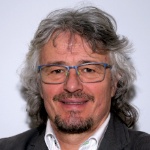
Ulrich Vogt
Dr.-Ing.Head of Department Flue Gas Cleaning and Air Quality Control (RuL)



